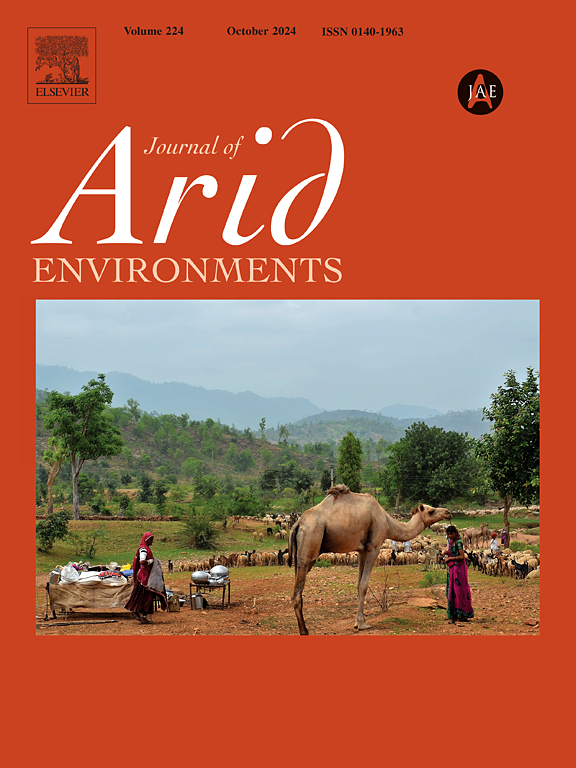Assessment of soil erosion patterns in Maharloo watershed using remote sensing techniques and early warning signals
IF 2.5
3区 环境科学与生态学
Q2 ECOLOGY
引用次数: 0
Abstract
This study assessed the soil erosion dynamics in Iran's Maharloo watershed using remote sensing indices (Normalized Difference Vegetation Index (NDVI), Normalized Difference Salinity Index (NDSI), and Topsoil Grain Size Index (TGSI)) and machine learning models (RF, SVM, and BRT). Landsat 8 satellite images (2005–2024) were processed via the Google Earth Engine, with field validation ensuring accuracy. Among the indices, TGSI (R2 = 0.86), NDSI (R2 = 0.89), and NDVI (R2 = 0.87) showed the strongest correlations with ground data (Rain, Soil and Vegetation). The RF outperformed the other models (AUC = 0.89), identifying the central and western regions as warning erosion zones. Breakpoint analysis revealed abrupt changes in NDVI and NDSI (2013), while early warning signals (autocorrelation, variance, and skewness) indicated an escalating erosion warning, particularly near wetlands and rainfed fields. Spatial trends highlighted significant NDVI declines (Kendall's τ = 0.69) in wetland peripheries and NDSI increased (τ = 0.52) in northern farmlands. These findings underscore the efficacy of integrating machine learning and remote sensing for erosion monitoring, providing actionable insights for land management and conservation strategies.
利用遥感技术和早期预警信号评估Maharloo流域土壤侵蚀模式
本研究利用遥感指数(归一化植被指数(NDVI)、归一化盐度指数(NDSI)和表土粒度指数(TGSI))和机器学习模型(RF、SVM和BRT)评估了伊朗Maharloo流域的土壤侵蚀动态。Landsat 8卫星图像(2005-2024)通过谷歌地球引擎进行处理,并进行现场验证以确保准确性。其中,TGSI (R2 = 0.86)、NDSI (R2 = 0.89)和NDVI (R2 = 0.87)与地面数据(雨、土、植被)的相关性最强。该模型优于其他模型(AUC = 0.89),将中部和西部地区确定为侵蚀预警带。断点分析揭示了NDVI和NDSI的突变(2013),而早期预警信号(自相关、方差和偏度)表明侵蚀预警不断升级,特别是在湿地和雨农田附近。在空间趋势上,湿地周边的NDVI显著下降(Kendall’s τ = 0.69),而北部农田的NDSI显著上升(τ = 0.52)。这些发现强调了将机器学习和遥感结合起来进行侵蚀监测的有效性,为土地管理和保护策略提供了可行的见解。
本文章由计算机程序翻译,如有差异,请以英文原文为准。
求助全文
约1分钟内获得全文
求助全文
来源期刊

Journal of Arid Environments
环境科学-环境科学
CiteScore
5.70
自引率
3.70%
发文量
144
审稿时长
55 days
期刊介绍:
The Journal of Arid Environments is an international journal publishing original scientific and technical research articles on physical, biological and cultural aspects of arid, semi-arid, and desert environments. As a forum of multi-disciplinary and interdisciplinary dialogue it addresses research on all aspects of arid environments and their past, present and future use.
 求助内容:
求助内容: 应助结果提醒方式:
应助结果提醒方式:


